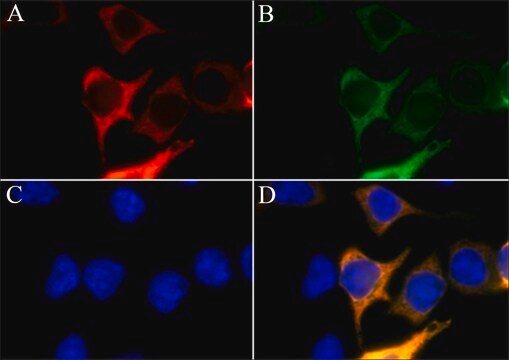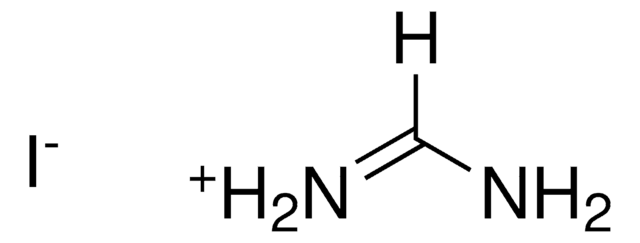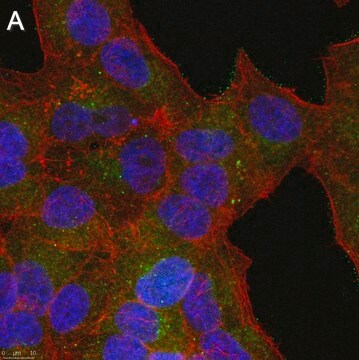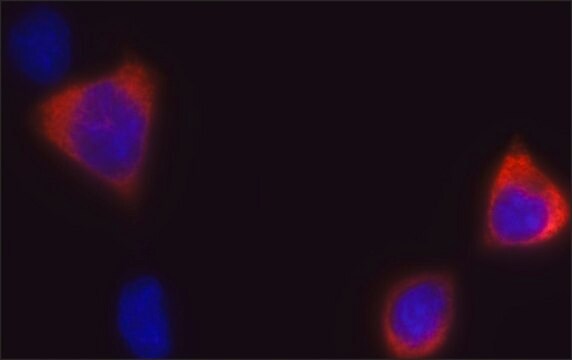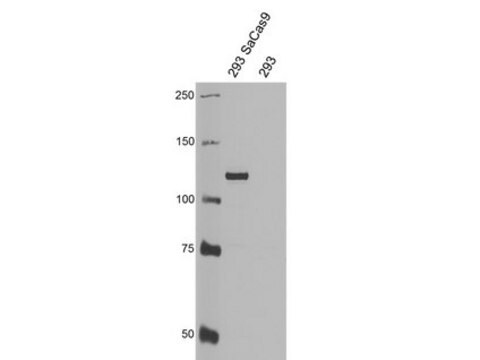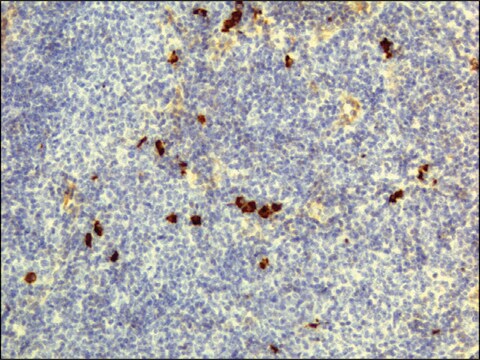SAB4200777
Anti-LbCas12a (Cpf1) antibody, Mouse monoclonal
clone LbCpf1, purified from hybridoma cell culture
Synonym(s):
Anti-CRISPR-associated endonuclease AsCas12a from Lachnospiraceae bacterium ND2006, Anti-LbCpf1 antibody, Mouse monoclonal
About This Item
Recommended Products
biological source
mouse
Quality Level
antibody form
purified from hybridoma cell culture
antibody product type
primary antibodies
clone
LbCpf1, monoclonal
form
buffered aqueous solution
mol wt
~135 kDa
concentration
~1.0 mg/mL
technique(s)
immunoblotting: 0.6-1.2 μg/mL using human HEK-293T cells over-expressing LbCpf1 protein
immunofluorescence: 0.25-0.5 μg/mL using human HEK-293T cells over-expressing LbCpf1 protein
immunoprecipitation (IP): 1-2.5 μg/test using lysate of human HEK-293T cells over-expressing LbCpf1 protein
isotype
IgG1
UniProt accession no.
shipped in
dry ice
storage temp.
−20°C
target post-translational modification
unmodified
General description
Cpf1 (CRISPR from Prevotella and Francisella 1) belongs to class 2 type V CRISPR-Cas endonuclease system. Cpf1 comprise several differences from Cas9 protein including cleavage with 5′ overhangs, a shorter guide RNA and a longer distance between the seed sequence and cleavage site.
LbCpf1, Cpf1 from Lachnospiraceae bacterium ND2006, was examined together with 15 members of Cpf1 nuclease family and proved to mediate efficient genome editing in HEK293FT cells with improved results compared to SpCas9.5 According to thr crystal structure, LbCpf1 has a triangle-shaped architecture with a large positively charged channel at the centre.7 The crRNA binding was shown to induce the pronounced structural rearrangements of LbCpf1, leading to formation of a substrate-binding conformation of LbCpf1. Over-expressed in plant cells, LbCpf1 demonstrated more than 10-fold transcriptional repression of the target gene.
Monoclonal anti-LbCpf1 antibody can provide a useful tool for genome editing research, such as detecting and monitoring LbCpf1 positively transfected cells.
Immunogen
Application
Physical form
Storage and Stability
Other Notes
In order to obtain best results in different techniques and preparations we recommend determining optimal working concentration by titration test.
Not finding the right product?
Try our Product Selector Tool.
Storage Class Code
12 - Non Combustible Liquids
WGK
nwg
Flash Point(F)
Not applicable
Flash Point(C)
Not applicable
Choose from one of the most recent versions:
Certificates of Analysis (COA)
Don't see the Right Version?
If you require a particular version, you can look up a specific certificate by the Lot or Batch number.
Already Own This Product?
Find documentation for the products that you have recently purchased in the Document Library.
Global Trade Item Number
| SKU | GTIN |
|---|---|
| SAB4200777-100UL | 4061833265321 |
Our team of scientists has experience in all areas of research including Life Science, Material Science, Chemical Synthesis, Chromatography, Analytical and many others.
Contact Technical Service